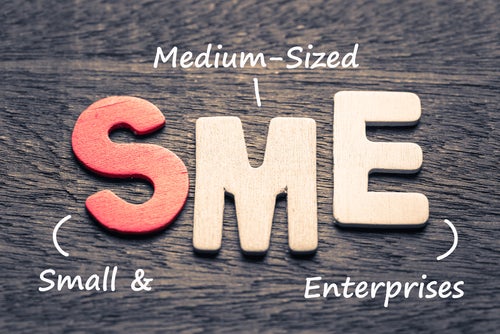New HMRC proposals
should provide greater certainty to the process of claiming capital
allowances.
 Capital
Capital
allowances are deductible from a company’s taxable profits in the
form of an annual writing down allowance for expenditure on plant
and machinery. On 31 May, HMRC published a consultation document
setting out proposals for two notable changes to the current
capital allowances regime.
In order to qualify for capital
allowances, HMRC propose that:
- businesses should pool their
expenditure on fixtures within a short period (either one or two
years) of acquiring them (the ‘mandatory pooling’ proposal). The
aim is that an agreed value is reached while the seller is still
contactable or HMRC may still raise an enquiry and that this occurs
before the last date when both parties are able to amend their tax
returns (normally a year after they file their returns);
and - the buyer and seller of a
second-hand building must agree the amount of the sale price
attributable to the fixtures, and within a similar timescale,
record and formally submit a joint note of their agreed price to
HMRC with their respective tax returns.
Why are these changes thought to
be necessary? When a business property containing second-hand
fixtures is sold, the cost of the fixtures on which the new owner
is entitled to claim capital allowances must not exceed the
disposal value that the previous owner is required to bring into
account for those fixtures in their capital allowances
computation.
That disposal value is the
amount of qualifying expenditure clawed back from the seller and
hence available for the buyer. This ensures that overall the buyer
and seller together do not claim capital allowances equalling more
than the original expenditure on the fixtures.
How well do you really know your competitors?
Access the most comprehensive Company Profiles on the market, powered by GlobalData. Save hours of research. Gain competitive edge.

Thank you!
Your download email will arrive shortly
Not ready to buy yet? Download a free sample
We are confident about the unique quality of our Company Profiles. However, we want you to make the most beneficial decision for your business, so we offer a free sample that you can download by submitting the below form
By GlobalDataA buyer and seller may together
elect to apportion a part of the sale price to the fixtures, up to
a maximum of the lower of the sale price and seller’s expenditure
on the fixture (known as a ‘section 198 election’). This election
must be notified to HMRC within two years.
However, in practice, at the
time of sale, the parties often neglect to apportion an amount to
the fixtures and may value them differently in their respective
capital allowances calculations.
Since there is no time limit on
pooling the expenditure on plant and machinery (provided the
fixture is still owned and used in the business), this may be
several years post-acquisition at a time when the previous owner
has had its tax returns signed off and is no longer contactable
(including where a company has become insolvent) and HMRC are no
longer able to raise an enquiry, making it very difficult to
determine the disposal value, and ensure that there is approximate
symmetry.
Furthermore if the issue is no
longer material to both parties, there may no longer be any
recourse to the First-Tier Tribunal (FTT) for determination of a
single value. This therefore has, in HMRC’s view encouraged owners
of ‘fixtures heavy’ businesses to make substantial late fixture
claims where it appears likely the previous owner would have
claimed capital allowances and the bulk of the expenditure would
have already been written off.
HMRC also proposes fixing the
tax written down value in the hands of the seller as the minimum
amount that may be agreed as the price on the sale of a fixture.
This is to prevent the seller retaining the benefit of capital
allowances when it no longer possesses the asset as part of its
business.
Until now it has been possible
through a section 198 election to apportion any value as low as £1
(€1) to fixtures, with a view to the seller retaining the benefit
of allowances. If this is not possible, HMRC instead propose
improving anti-avoidance measures to prevent the acceleration of
capital allowances on fixtures.
The need for change was
highlighted in the recent decision of The Granleys [2011] UKFTT
376 (TC), a case which involved both the sellers and buyers of
a residential care home business making a capital allowances claim
in respect of the same plant and machinery.
Prior to the sale, the
sellers commissioned a specialist capital allowances adviser which
identified further items of plant and machinery for an additional
retrospective capital allowances claim. However, since the sellers
were moving abroad, the adviser did not proceed with a claim on
their behalf.
For the tax year in question,
both the buyers and sellers appeared to make a claim in respect of
the additional expenditure identified by the report.
The FTT ruled that although
the buyers had acted in good faith and taken all reasonable steps
to verify whether a previous claim had been made, the appellants
had failed to discharge the burden of proving that the sellers had
not already claimed capital allowances. HMRC’s decision to refuse
the buyers’ claim was entirely reasonable.
Comment
The new HMRC proposals should
provide greater certainty to the process of claiming capital
allowances.
HMRC will have access to the
agreed record of unrelieved expenditure available in respect of
qualifying assets and this should prevent taxpayers from purposely
making late capital allowances claims years after they have
acquired fixtures, when knowledge of any previous claims is
virtually impossible to ascertain.
For the taxpayer, it will
force the parties to apportion consideration to fixtures when this
is fresh in their minds and will be particularly helpful for
situations when the last owner is not chargeable to tax and a
current owner must discover the disposal value of the last owner
but one.
At present, a buyer can find
itself in a position prior to a sale of fixtures where it is
preferable not to bring the value of potentially available capital
allowances to the seller’s attention as this may weaken its
negotiating position. While beneficial at the time of sale, this
may prove subsequently to be a short-sighted strategy when capital
allowances are not in fact available. However, there may be a need
to fine tune the proposals and ensure they do not impact businesses
negatively.
Next
steps
The consultation period has
now closed. The government intends to publish draft legislation
later in 2011 with a view to including it in the Finance Bill
2012.







